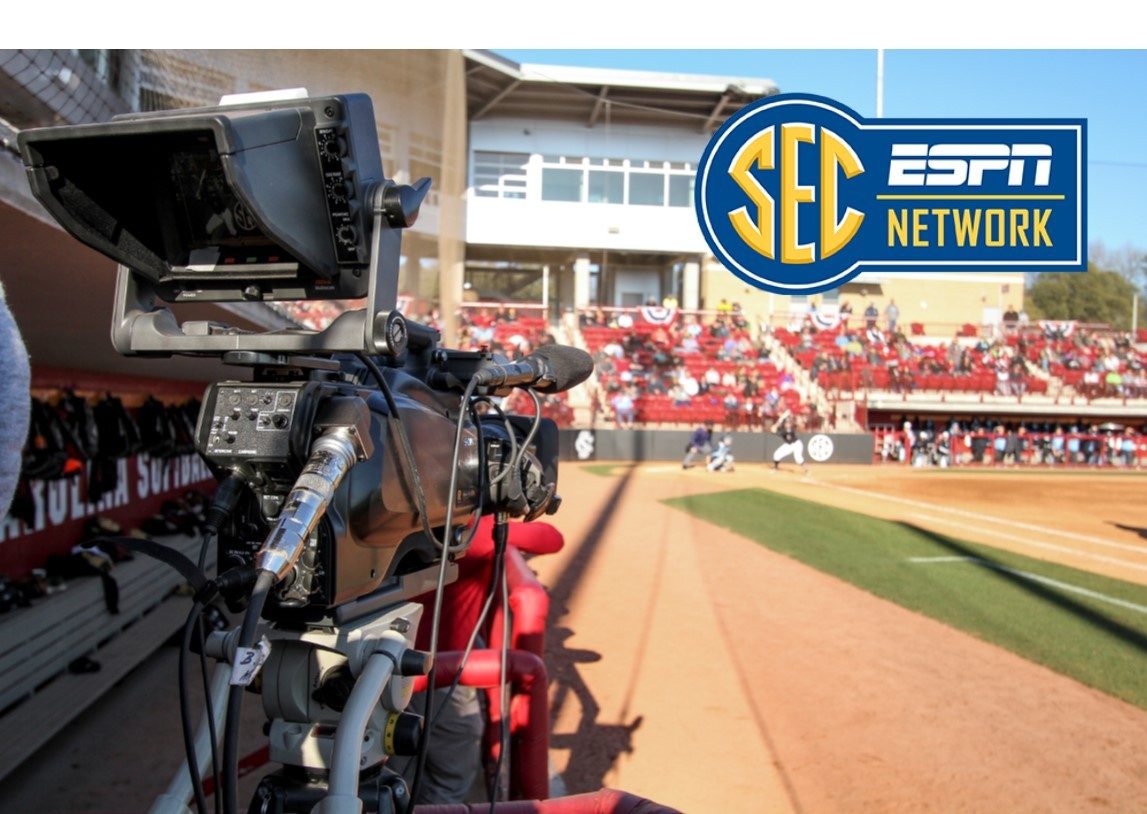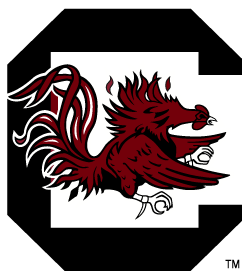
South Carolina and the SEC Network Are Ready for Year Two
Aug. 14, 2015

Year two of the SEC Network is here, and South Carolina is looking to build on an impressive inaugural broadcast campaign which saw the Gamecock athletics program receive unprecedented television exposure. In addition to what was made available on the SEC Network’s linear television channel, South Carolina led the 14 conference schools with 95 institutionally-produced events on SEC Network+, which is the online, or digital, platform.
“Specific to South Carolina, producing that many events on its own is a fantastic accomplishment,” said Chris Turner, ESPN’s Senior Director of SEC Programming. “We’re incredibly thrilled with what all of the schools have done. We went out with a goal of 1,000 live events across the linear network and the digital platform, and the digital platform itself exceeded that number, which means we exceeded 1,500 total events. There is no other way to look at it other than saying it was an incredible first year success.”
Each institution had the opportunity to select how many non-televised home events it would produce for the online/digital channel, and South Carolina dove right in. Athletics Director Ray Tanner made the commitment for every home game that wasn’t scheduled for regular broadcast television to be produced by South Carolina’s Live Operations staff and carried on SEC Network+ for men and women’s soccer, volleyball, men and women’s basketball, baseball and softball.
“The benefits of having the games on the SEC Network outweighed any other challenges that we could have had,” Tanner said. “When you talk about the ability for our fans to watch Gamecock athletics teams, the quality of the production that we were able to have for those games, and the recruiting aspect, it just made sense that we would want to do as many broadcasts that we could do across the board.”
Once they had their equipment in line, it was full speed ahead for David Cockfield, South Carolina’s Director of Live Operations, and his two other full-time staffers; Mark Slice, Associate Director of Live Operations/Engineering, and Just Stoll, Assistant Director of Live Operations/Graphics.
“We didn’t know all of the challenges going in, but David Cockfield and his staff did a masterful job,” Tanner said. “The production, the quality of the talent, and the willingness of our coaches to help out, all played a part in making the broadcasts successful.”
“It shouldn’t be lost that South Carolina, and all of the schools, aren’t doing this with a robust-sized staff,” Turner said. “By and large, they’re doing it with a small group of people and they’re churning out unbelievable, high-quality work, and a high volume of that high-quality work.”
South Carolina led the SEC with 93 of its 95 SEC Network+ productions using four-camera shoots.
“The network doesn’t do anything less than four cameras when they do a show,” Cockfield said. “So if there was ever a situation where there was a rainout on the Network for a regularly televised event, they could come right to our digital broadcast and fill the air time with our program on the television, or linear side, and it would look just like one of their own. The viewer at home wouldn’t see a difference.”
South Carolina was the first to produce more than one event simultaneously on SEC Network+ last fall, and was able to do that routinely throughout the year as sports overlapped.
“That was a huge step for us,” Cockfield said. “Once we did that, it became a standard. Doing two digital broadcasts simultaneously is what we’re used to now, and we know we can do it.”
It wasn’t long before South Carolina began utilizing video features and profiles of Gamecocks student-athletes within the broadcast which were produced by Gamecock Productions. Each school is looking at different ways to help program the network. The “SEC Network Takeover” in July allowed each institution a 24-hour time-slot to provide its programming of past games, original features and interviews. NCAA Tournament/Championship contests were not available, but that is something administrators would like to remedy. The Charlotte-based network is making content produced by the institution a priority for an array of sports.
“We’re ready to give them that content,” said Charles Bloom, Senior Associate Athletics Director for External Affairs. “The Network itself is making uniqueness a topic. That means showing more of the personalities of the schools and of the teams.”
“No one knows those stories like the institutions themselves and those production teams on those respective campuses,” Turner said. “We may not have the access to or the knowledge of those types of stories. The comfort level that student-athlete is going to have with that campus production team is far greater than if the network sent someone down the road to listen to a story to be told.”
When you talk about the ability for our fans to watch Gamecock athletics teams, the quality of the production that we were able to have for those games, and the recruiting aspect, it just made sense that we would want to do as many broadcasts that we could do across the board.
Ray Tanner
The need for a multitude of proficient crew members for each broadcast provided opportunities for current South Carolina students who are looking to break into the business.
“We have 20 student staffers who are working side-by-side with professional freelance people as camera operators, graphics operators, and replay operators,” Cockfield said. “So it’s a great learning experience for them. It helps us stretch our dollar so we can do more events. It’s a win-win.”
“The educational component for the students has always been a part of the relationship between the Southeastern Conference and ESPN,” Turner said. “If you’re a student, and you’re doing over 100 productions per year, think about the kind of resume you have just built by the time you are a senior. We’ve already seen students from various schools get hired by ESPN to work on their productions, so in a way that program is already paying dividends.”
Because of their proficiency, South Carolina’s Live Operations staff also produced broadcasts for the SEC Network’s regular television broadcasts, which was way ahead of schedule according to Cockfield. Cockfield’s biggest challenge was that the television production studio is housed in Williams-Brice Stadium and is linked to each of the athletics venues.
“That’s a different mindset because for most television broadcasts, the production truck is right outside of the arena so if something goes wrong you can just run in and fix it,” Cockfield said. “So we have to make sure we have people at both locations who can fix problems, and you have to be able to communicate well with your talent.”
South Carolina ranked third in the league in total unique viewers for the online platform despite the fact that not all of the major cable/satellite carriers in the state provide the SEC Network+ platform. Overall, baseball had the 29 most-watched events throughout the league on SEC Network+, including 48 of the top 50, and South Carolina baseball had more viewers per event out of all of the Gamecock athletics events produced by the institution. South Carolina’s coaches enjoyed the increased exposure as well.
“We received lots of positive feedback from them” Cockfield said. “The opportunity for coaches to tell a prospective student-athlete that they’re going to have a lot of their games on the SEC Network is huge. For some sports, the coaches were used to being on television only a couple of times per year. But now, they know we’re always going to be there, so when another network came in to do their broadcast, our coaches were already in a rhythm of doing that.”
South Carolina’s Live Operation staff increased its full-time staff with a pair of new positions for year two, as Valerie Gerfin has joined the team as the Associate Producer of Live Productions and Kim Justice is on board as the Assistant Engineer for Live Productions.
“We’re going to do more,” Cockfield said. “We’re going to do more linear broadcasts. We’ll be adding some cameras. We’ll add more students into the mix. We found that students are eager to work and hungry to learn. We are pretty lucky to be in the situation we are in because we have a lot of support from the administration.”
“When you blow it out like we did in year one, it does give you pause when you think about what you want for year two,” Turner said. “In many ways we hit the fast forward button, not to year two, but almost to year three, four or five in many areas of the Network and what our goals were for it.”












